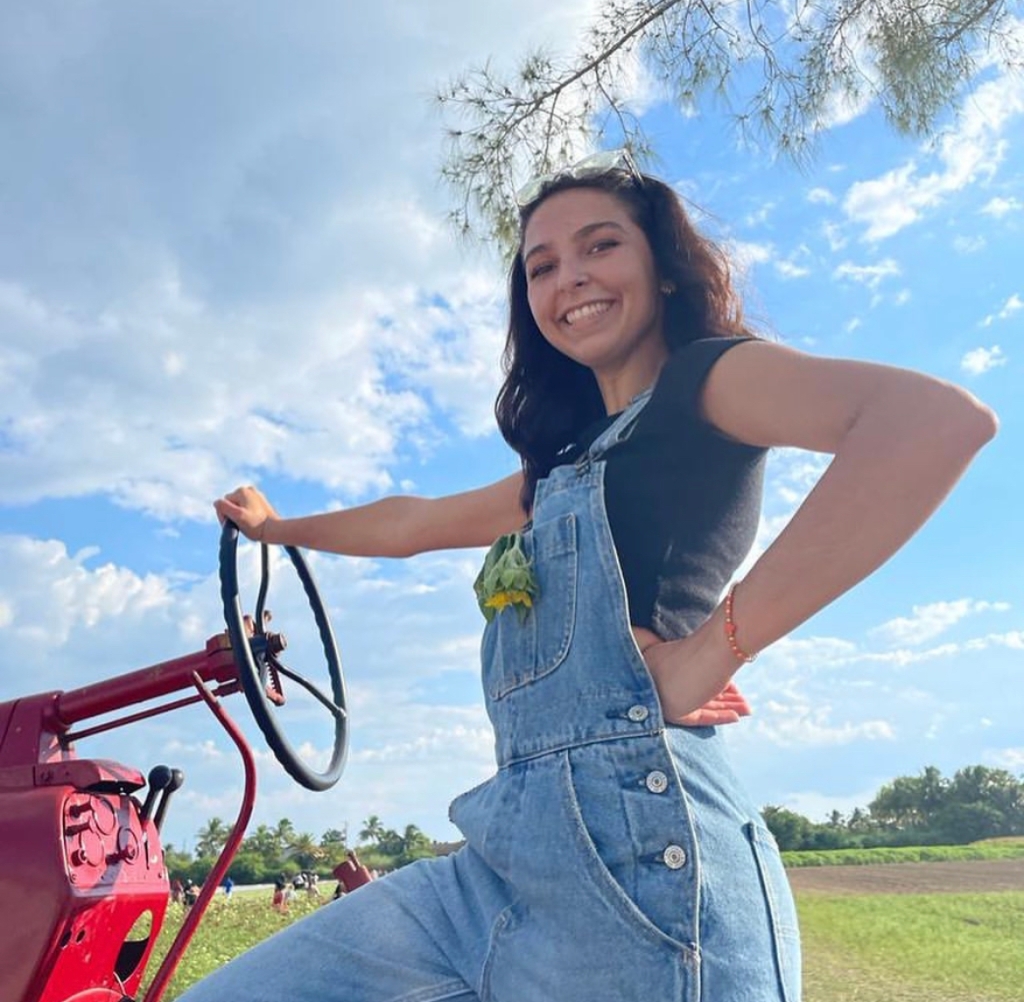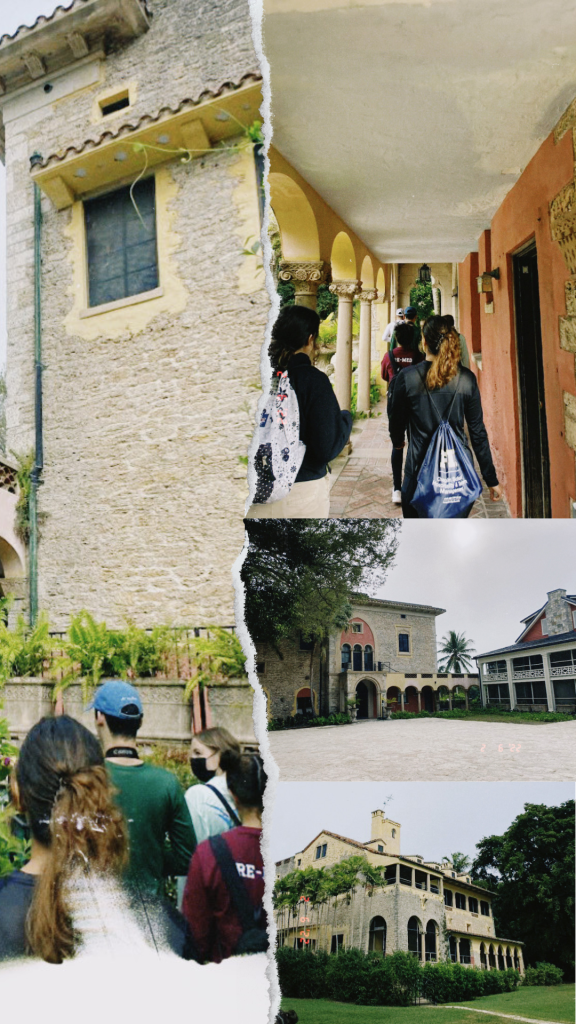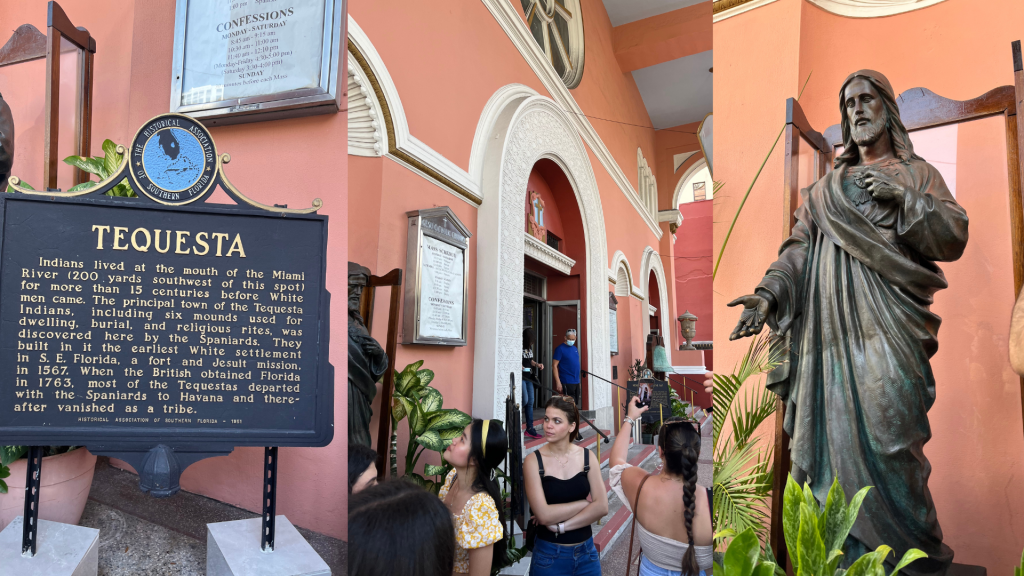
Juliana M. Cuneo is a Junior at Florida International University, majoring in Psychology and the possibilities of obtaining a minor in Social Work. With a passion for landscape and floral photography, working with people, traveling and indoor rock climbing, Juliana aspires to work in a field that centers around helping children through the use of their creativity and activities to improve their well-being. In traveling, Juliana has gained distinct cultural perspectives and through various Special Education courses gained a deeper appreciation and empathy for young kids and adolescents that seek help in their life. She has great desire to make change for all those who have not been in a community that has been supportive of them and is eager too, one step at a time, spread optimism through her actions.
Deering as Text

“Roots Are of Matter”
By Juliana Cuneo of FIU at Deering Estates, 28 January 2022
Walking through Deering Estates in the mid-day one becomes acquainted with both beautiful architecture and the smells of South Florida nature. As someone who grew up around the Cutler Bay area, raised by my Spanish grandparents there. I had always heard of The Charles Deering Estates, but had never come to know or understand what was the Deering Estates. Until the hike.

Fancy ornaments decorate the walls, chandeliers hang from the ceilings, reflections from mirrors, porcelain vases, and intricate rugs. All these features collectively culminate an essence of high status/class to some degree. Especially, considering how the elements have remained intact to tell a story to all those that visit the Richmond Cottage and Stone House. How has its history morphed over time? Do some who come to visit the Estate view it as a time capsule for South Florida nature management and prosperous historical legacy? While others see it as an emblem for our blatant ignorance of creating a Slave community and removing the tribes from their native land for settlers convenience? The roots of Miami are essential.
Photos taken by Daniela Canizares /CC by 4.0

One cannot deny the architecture’s splendid facade and interior. The site captures the diversity of this region and does not fail in showing the precious coastal, mangrove ecosystem that those of care intensely preserve and manage. Prior to humankind, there was just land. Then, dating back to 10,000 years there were Native Americans that roamed the grounds forming communities. As I was told the atrocities of what had occurred my vision switched and goosebumps covered every inch of my arms. I could no longer admire the acclaimed, surface-level beauty. I felt this sense of embarrassment and guilt over the pain that the ancient ancestors endured at the moment I stood in front of the Tequesta Burial Mound. What a travesty, yet history at points has been used to profit off the horrid roots of creating a site like many others of Spanish influence. Because no time machine can be used to travel to the point of battle, what is important is how Deering Estate’s “About” is told and what is the connotation elicited towards the visitors of the 21st Century.
Photos taken by Elsa Chung/CC by 4.0
Vizcaya as Text

“Aesthetics of Blend”
By Juliana Cuneo of FIU at The Vizcaya Museum and Gardens, 18 February 2022
Classic Miami traffic did not lack presence this morning as we headed towards Vizcaya. However, this did not hinder the quality of the experience at this Biscayne Bay estate and property. This landmark revisited the history that Miami has to offer that can go unnoticed in the suburbs and city scene. Taking the opportunity to delve into both the architectural and botanical elements of an early 1900s landmark by connecting it with the role that European countries had on the aesthetic of it allowed us to explore the ida y vuelta concept.
In Coconut Grove, yet my eyes spot Italy Miami Coastal Life, yet the Renaissance era slips in Limestone masonry guides my peripheral vision Perfectly crafted statues constructed by men Not native men as could be assumed Men from across the Atlantic A place where artistry was at its peak The value brought to the Americas An invitation awaits to be opened By whom one may ponder The sculpturists, designers, muralists Brought on Biscayne soil to create the finest estate James Deering A businessman who established this A site where blend and homogeneity is present Intertwined by different influences Original pieces Antiques Commissioned work All at the foot of this place for viewing Importation What would have occurred if importation was not plausible? How would Vizcaya aesthetically be fertile? Basis reliant on those of other nationality Masterpieces created by others As for many, importation was essential The wealthy showcased their wealth through their riches Vizcaya shows what can come to stance with wealth An estate of glory Ornamented bedrooms, stained glass windows, formal gardens

Miami as Text

“Finalmente, La Libertad”
By Juliana Cuneo of FIU at Downtown, Miami , 11 March 2022
The Freedom Tower is much more than an architectural work influenced by the Giralda Bell Tower in Seville, Spain and Mediterranean Revival Style. For Cubans that fled the communist state of Cuba in the 1960s the Freedom Tower symbolizes a marking point of their new freedom. A freedom that enlightened tens of thousands of Cubans with a sense of hope and optimism for their new life to begin in the United States. What once began as a printing facility for a newspaper company metamorphosed into a facility to process and document those fleeing the Cuban Revolution with intentions of bringing safety upon them. Setting in motion a period of refugees entering the Miami community. A blessing for many of my own peer’s families that experienced this emotionally packed, identity mending journey.
Historical sites hold two meanings. The one that connects those who have personal relationships with the site because of their ancestors, culture, and history and view it as emblematic. Versus the second that holds a lighter value, more surface level per se because of the population of people that treat it as any other building made in Downtown. If you are not Cuban then the Tower may hold no meaning to you because there is no connection. This concept of double meaning is applicable to many other historical sites around the streets of the Miami scene in the same manner as the Gesu Church.

The Gesu Church functions as an ongoing Catholic Church. Paralleling to the Freedom Tower for the Cubans the Gesu Church for Catholics holds sincere meaning because it signifies the religious history of Roman Catholicism in Miami. Demonstrating the power of religious expansion across seas and its ability to withstand the growing changes and developments of the surrounding city. What if we eliminated every single different type of church within the community and destroyed every historical building that held a form of importance? Protest and chaos would emerge as people throughout history have shown that they will fight for what they believe in. Whether that be for their own personal freedom, the liberty of their brothers and sisters, or their promise to God in spreading their faith. How would you feel as a Cuban Catholic living in Miami if the Freedom Tower and Catholic Church were taken away? Rather I am one step away and could ask my own mother who fled Cuba as a refugee practicing Catholicism.
SOBE as Text

“Architecture Meets Cultural Crossroad”
By Juliana Cuneo of FIU at South Beach, Miami , 1 April 2022
South Beach in April does not shy from bringing the Miami heat as we walked down Ocean Drive from South Pointe Park Pier to The Betsy Orb. South Beach located in Miami, Florida not only is the host for beautiful beaches, delicious restaurants, and an extravagant party scene, but is the center of architectural landmarks. Being a native South Floridian I was completely sheltered away from any knowledge of what was showcased by the shore, three forms of architecture: Mediterranean Revival, Art Deco, and MiMo (Miami Modernist Architecture). Art Deco captivated my eye for all the forms that it came in.

How is it that the form of a ziggurat from Mesopotamia ended up in Miami? The pyramidal structure can be seen through many of the hotels where we see at the roof a stepping up style. Symmetry is also key to this type of architecture in Art Deco. The use of blue to mimic what was in front of the buildings, the ocean. Symbolic figures that parallel Egyptian culture through decorative motifs.
One of the most enjoyable moments was becoming spotters of the different types of architecture as we called out whether a building was Mediterranean Revival, Art Deco, or MiMo. From the left I would hear “That’s certainly Art Deco!” and the right “I saw that house from a movie, doesn’t it have influence from Italy”. Bringing us to the very street in Miami where we are able to meet so many styles of architecture surfaces how significant the influence that architecture has on a community. I have fallen victim to walking past all these buildings on a friendly, familiar day at the beach to never stop and question why the buildings looked the way they did and now I know.

Juliana Cuneo
Help fund my Spain Study Abroad this summer!
$1.00